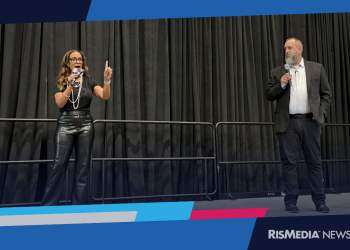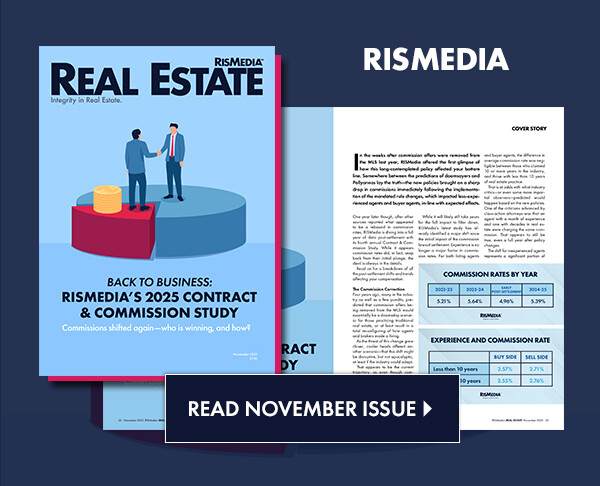As a long-running housing supply imbalance appears to be shifting, higher inventory is not currently drawing in buyers—at least in the market for new homes—which could raise concerns about “cutbacks in new construction,” per comments from National Association of Home Builders (NAHB) Chairman Buddy Hughes.
Per findings from the U.S. Census Bureau, 652,000 newly constructed homes were sold in July 2025. This is down slightly, 0.6%, from the revised June figure of 656,000 sales, and an 8.2% decline year-over-year.
The number of new homes currently for sale in July was 499,000. This is also a 0.6% drop from June, but a 7.3% increase year-over-year. The number of new homes for sale also constitutes 9.2 months of inventory, about the same as where it was in June.
In a statement, Bright MLS Chief Economist Lisa Sturtevant described this level of inventory as “significantly higher than typical.”
Joel Berner, senior economist at Realtor.com®, also described the 9.2 months supply figure as “firmly in buyers’ market territory.” But homebuyers are not leaping at this market, which Berner attributed mostly to current mortgage rates.
“The opportunity for new home shoppers is ripe, but stubbornly high mortgage rates kept many of them sidelined this July. The recent tick down in rates may spur on an August revival in buyer activity, but the July peak of the home-buying season proved to be muted,” said Berner.
The Federal Reserve is signaling it will likely cut interest rates at its September Federal Open Market Committee (FOMC) meeting, which could keep up the downward pressure on mortgage rates.
In a statement, NAHB Senior Director of Forecasting and Analysis Jing Fu listed a greater number of “ongoing pressures” deterring homebuyers, including: “elevated interest rates, labor shortages, rising construction costs and inefficient regulatory costs,” also noting that most new houses for sale lie within a $300,000 to $500,000 price range.
Per the U.S. Census Bureau, the median sales price of a new home in 2025 was $403,800. This was a decrease both month-over-month (from $407,200) and year-over-year ($429,000). Sturtevant described the July 2024 – 2025 year-over-year median home price drop of 5.9% as the highest annual drop since November 2024.
The average sales price for a new home in July was also down at $487,300, compared to June ($505,300) and July 2024 ($513,200). Another factor, observed by Sturtevant, is that the increasing inventory of new homes means that new homes are selling for median prices lower than existing homes.
“Historically, new homes sell for more than existing homes, but that pattern has been upended in recent months as new-home inventory has surged. The median price of a new home sold in July was nearly $20,000 lower than the median sold price of an existing home,” Sturtevant explained.
“Builders have proven more willing to cut prices than home resellers,” observed Berner, “but this month’s new-home sales data suggests that the aggressive pricing is still not enough to get new homes moving at a faster pace.”
The data also doesn’t bode well for the housing market overall, marking a further downward shift from last year.
“Elevated mortgage rates and ongoing economic uncertainty are weighing heavily on buyer demand,” said Hughes. “Meanwhile, an elevated inventory of unsold homes, fueled by lagging sales, is prompting concerns over potential cutbacks in new construction.”
“In 2024, as sales of existing homes hit a 30-year record low, new-home sales were still positive, keeping overall transactions in the housing market solid. This year, however, with existing-home sales tracking below last year and new-home sales substantially weaker, the overall 2025 housing market is set up to fall below 2024,” said Sturtevant to compare the respective housing markets of the two years.
Regional breakdown
“The lackluster July sales figures were consistent across regions,” noted Berner. The seasonally adjusted rate of new-home sales/houses for sale are as follows:
Of the four major U.S. census regions, only the West saw positive monthly growth in new homes sold or for sale; hitting an annualized rate of 153,000 homes sold, which was an 11.7% monthly increase. However, annually, the West saw a fairly steep 19.9% decline in new homes sold.
The Midwest saw the opposite correlation. New-home sales declined by 6.6% month-over-month in the Midwest to 85,000, but increased annually by 4.9%.
The Northeast saw an annualized rate of 26,000 new homes sold in the month of July. This was no substantial change compared to June, but was a 23.5% drop annually.
The South, which maintained by far the largest number of new homes sold at 388,000, saw similar figures of decline of new homes sold/for sale at 3.5% monthly and 4% annually.
For more information, click here.












